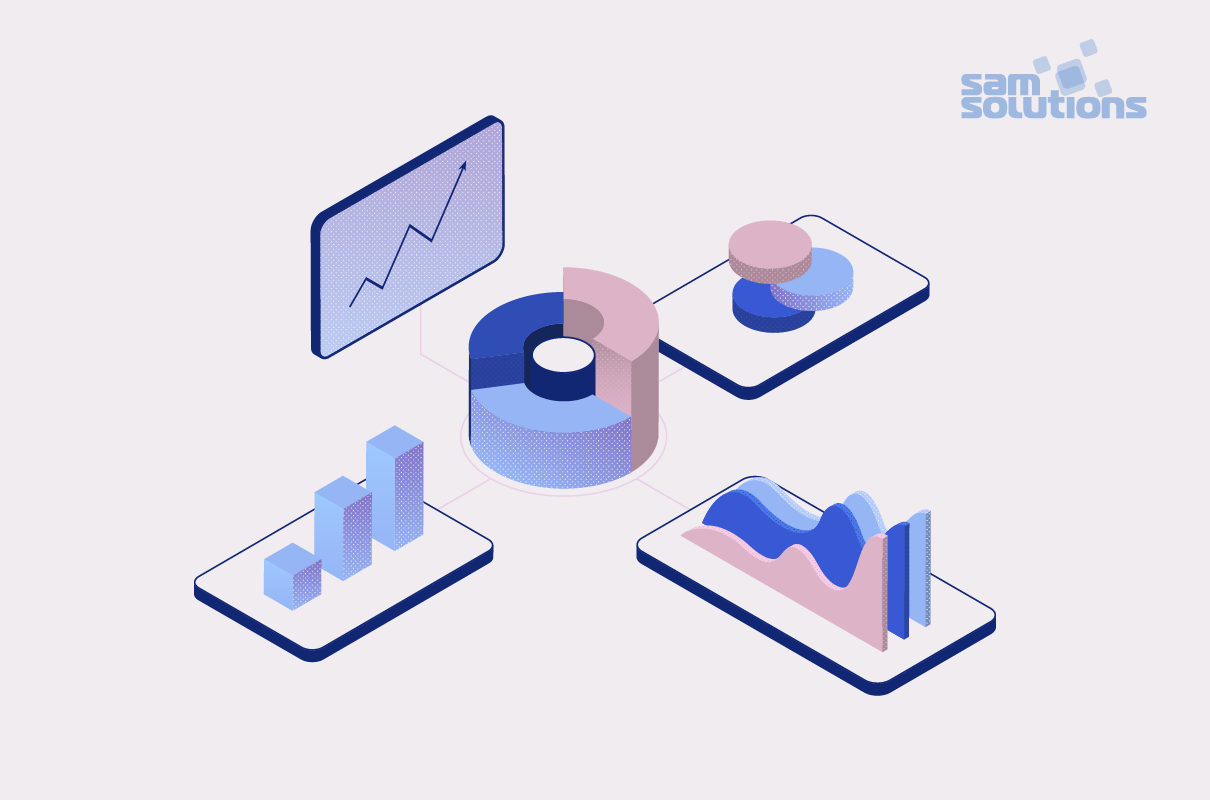The IoT platforms are suites of components that enable deployment of applications that monitor and control connected devices. They remotely collect data from connected devices to manage all of them in one system. There are dozens of IoT platforms on the market. The building of an IoT solution requires a platform to host and support it. We compiled a list of the top Internet of Things platforms to review the most popular, most used and fastest-growing in 2017.
We provide leading-edge IoT development services for companies that want to transform their business
Azure IoT Suite
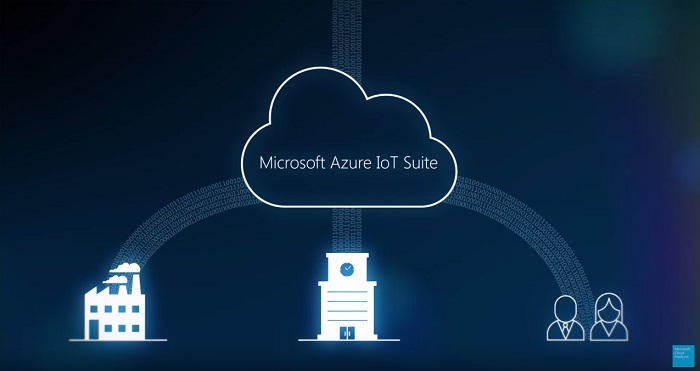
Source: microsoft.com
The Azure Internet of Things (IoT) services are included in our list of the best internet of things platforms 2017 for its broad range of capabilities.
Azure IoT Suite is a collection of services that include IoT Hub, Stream Analytics, Machine Learning, Notifications Hubs and Power BI. It supports a vast array of devices and operating systems and enables analysis and visualization of large quantities of data. It is also renowned for its scalability from POC to the larger deployment stage.
These enterprise-grade services enable you to:
- Collect data from devices
- Analyze data streams in-motion
- Store and query large data sets
- Visualize both real-time and historical data
- Integrate with back-office systems
- Manage your devices
Read also: Migrating to Azure: Best Practices
IBM Watson
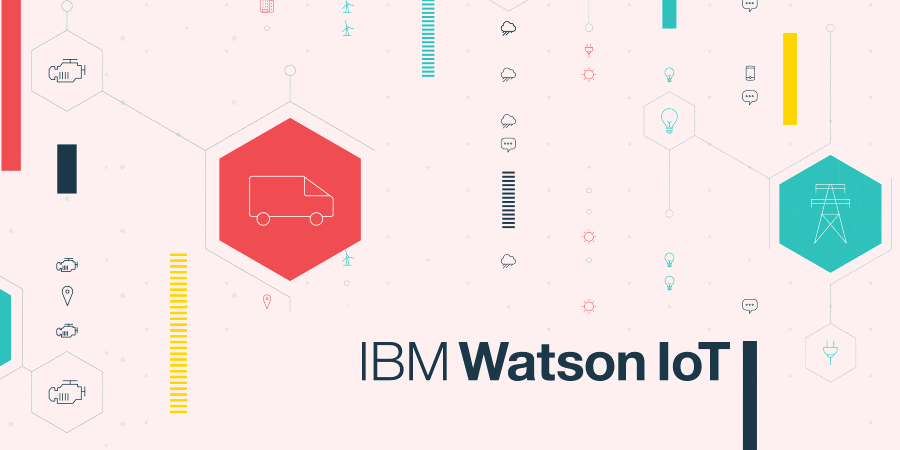
Source: ibmbigdatahub.com
The IBM Watson IoT Platform enables you to securely connect all types of devices — from chips to intelligent appliances and then develop and deploy your own custom enterprise-scale IoT solutions with ease.ё
- Connectivity: Quickly and securely register and connect your devices and gateways. You can find simple step-by-step instructions for connecting popular devices, sensors and gateways in IBM’s recipes site.
- Information Management: Control what happens to the data that is received from your connected devices. Manage data storage, configure data transformation actions, and integrate with other data services and device platforms.
- Analyze in Real Time: Monitor your real-time device data through rules, analytics, and dashboards. Define rules to monitor conditions and trigger automatic actions that include alerts, email, IFTTT, Node-RED flows, and external services to react quickly to critical changes.
- Risk and Security Management: IBM’s secure-by-design control capabilities protect the integrity of your IoT solution through secure connectivity and access control for users and applications. Extend the base security with threat intelligence for IoT to visualize critical risks and automate operational responses to policy-driven mitigation actions.
Amazon Web Services (AWS)
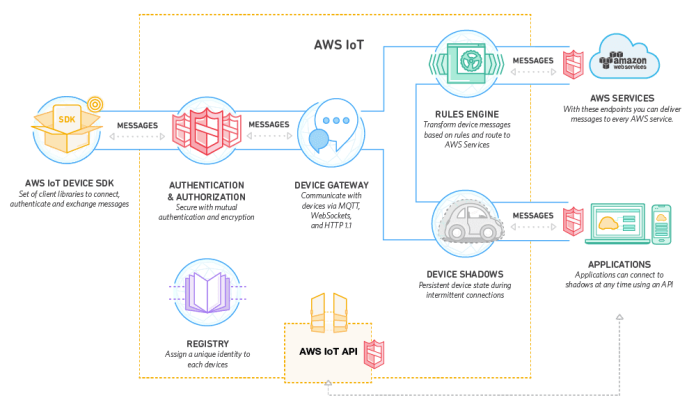
Source: amazon.com
Amazon Web Services (AWS) is one of the most popular IoT platforms on the market.
Amazon Web Services provides a highly reliable, scalable, low-cost infrastructure platform in the cloud that powers hundreds of thousands of businesses in countries all around the world. With data center locations in the U.S., Europe, Brazil, Singapore, Japan, and Australia, customers across all industries are taking advantages of the many features AWS brings, including:
- Cost: AWS offers low, pay-as-you-go pricing with no up-front expenses or long-term commitments. Amazon was able to build and manage a global infrastructure at scale and pass the cost-saving benefits onto you in the form of lower prices. Amazon has been able to lower their prices 15 times over the past four years.
- Agility and Instant Elasticity: AWS provides a massive global cloud infrastructure that allows you to quickly innovate, experiment and iterate. You can instantly deploy new applications, instantly scale up as your workload grows, and instantly scale down based on demand instead of waiting weeks or months for the hardware. It is possible to use just one virtual server or a thousand — you pay only for the time and resources used.
- Open and Flexible: AWS is a language and operating system agnostic platform; it is also a development platform and programming model that makes the most sense for your business. This flexibility allows you to focus on innovation, not infrastructure.
- Secure: AWS is a secure, durable technology platform with industry-recognized certifications and audits: PCI DSS Level 1, ISO 27001, FISMA Moderate, FedRAMP, HIPAA, and SOC 1 (formerly referred to as SAS 70 and/or SSAE 16) and SOC 2 audit reports. Amazon’s services and data centers have multiple layers of operational and physical security to ensure the integrity and safety of your data.
Oracle IoT
Oracle IoT is an important player in the IoT market. It was released in the second half of 2016 and may rise to be the leader in this market.
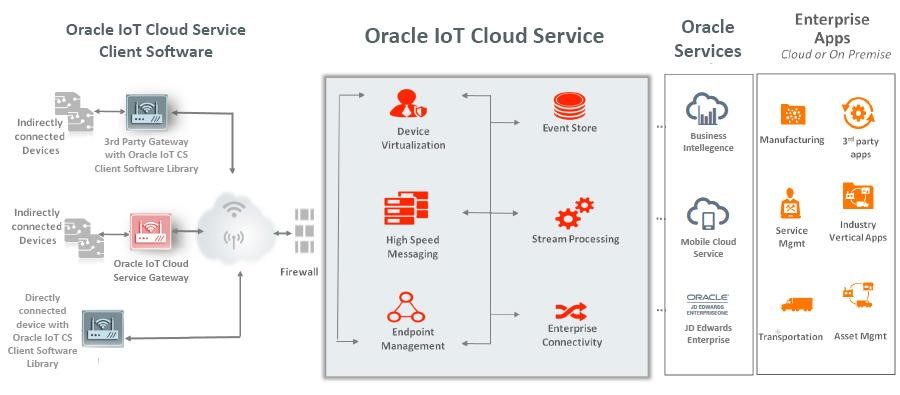
Source: oracle.com
There are three core elements in Oracle’s IoT cloud service:
- Connectivity – allows users to reliably and securely collect data from any device in any market through technical abstraction, thereby accelerating time to market
- Analysis – providing real-time analytics via big data processing
- Integration – Oracle IoT is pre-integrated with Oracle’s PaaS and on-premise applications using open APIs
The cloud service provides flexible IoT network topologies, virtual device simulation, stream processing, event stores, command and control functionality.
Kaa IoT
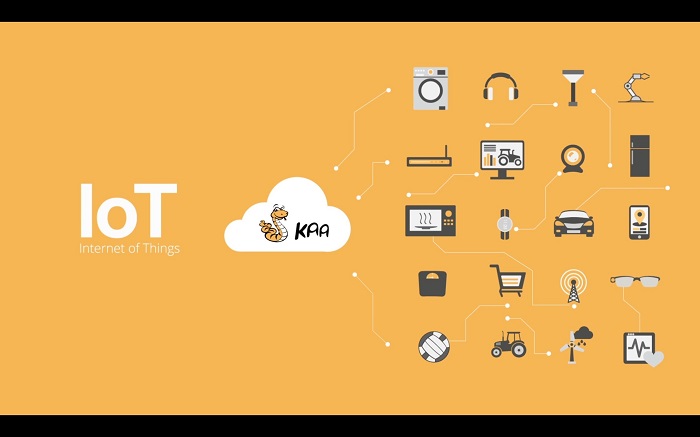
Source: kaaproject.org
Kaa is a multi-purpose open-source IoT platform that allows building complete end-to-end IoT solutions, connected applications and smart products. The Kaa platform provides a feature-rich toolkit for IoT product development. It dramatically reduces associated cost, risks and time-to-market.
There is a number of architectural specifics that make IoT development with Kaa so fast and easy. First, Kaa is hardware-agnostic and thus compatible with virtually any type of connected devices, sensors and gateways. It also provides a clear structure of IoT features and extensions for different types of IoT applications. They can be used almost as plug-and-play modules with minimal additional code on the developer’s part. Combined with unlimited options for connectivity protocols and integration with analytics, these capabilities make Kaa an apt metaphor for creative IoT development.
Kaa enables data management for connected objects and your backend infrastructure by providing the server and endpoint SDK components. The SDKs get embedded into your connected device and implement real-time bi-directional data exchange with the server. Kaa SDKs are capable of being integrated with virtually any type of connected device or microchip. The Kaa server provides all the backend functionality needed to operate even large-scale and mission-critical IoT solutions. It handles all the communication across connected objects, including data consistency and security, device interoperability and failure-proof connectivity. The Kaa server features well-established interfaces for integration with data management and analytics systems, as well as with your product-specific services. It acts as a foundation for the backend system that is customizable and expandable to meet the specific requirements of your product.
We develop world-class IoT solutions for SMBs and enterprises
Conclusion
All of the platforms that are mentioned in this article are more or less similar in their functionality and prices. The speed of innovation and the market drives these companies to keep up with each other, so similarities in these platforms are expected. The choice of the platform thus depends on the market necessity of your business and your industry.


























 5 Reasons Why Your Business Needs a Mobile eCommerce Application
5 Reasons Why Your Business Needs a Mobile eCommerce Application Using Salesforce to Improve Your Sales Pipeline: Five Tips
Using Salesforce to Improve Your Sales Pipeline: Five Tips Cross-Platform Mobile Development: Five Best Frameworks
Cross-Platform Mobile Development: Five Best Frameworks How to Develop Custom Accounting Software
How to Develop Custom Accounting Software 10 Best Web Development Frameworks in 2024
10 Best Web Development Frameworks in 2024




